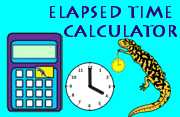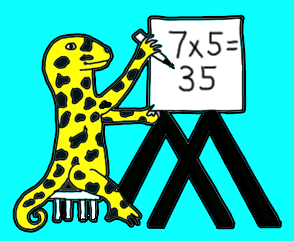Time Elapsed 000 00 000 Press Any Key to Continue

Welcome to our Elapsed Time Calculator.
Our converter will tell you exactly how much time has elapsed between two time points in years, months, days, hours, minutes and seconds.
How the Elapsed Time Calculator works
Step 1) Enter the date and time you want to start from.
Note: if you only want to work out the elapsed time between two time points on the same day, then just fill in the time boxes and ignore the date ones.
Step 2) Enter the date and time you want to go to.
Next click the Convert button to see exactly how much time has elapsed between the two date and time points.
The calculator calculates the time interval between two dates and times, changing it into a variety of formats.
If your time period is longer than one month then please read the next part below! Otherwise please ignore this section.
The Problem with months
From February 28th to April 1st could be said to be one month and four days because February 28th to March 28th is one month and then you have to add on four extra days to get to April 1st.
From February 28th to April 1st could be said to be one month and one day (or one month two days for a leap year) as you add on one day to get to Mar 1st (two days for a leap year). Then you just add on an extra month to get to April 1st.
Our worked examples below shows you two of the different methods that you could use for finding time intervals in months and explains which method our calculator uses.
Worked Example: January 20th to March 10th
How to work out the time interval between January 20th and March 10th (in the same year).
Method 1
- Time interval from January 20th to March 10th
- Step 1) We add a month to January 20th to get to February 20th.
- Step 2) We add 8 days to get to the end of February (9 days if it is a leap year).
- Step 3) We add 10 more days to get to March 10th.
So our answer would be 1 month and 18 days (or 1 month and 19 days if it is a leap year).
This method looks fine so far!
Method 2
- Time interval from January 20th to March 10th
- Step 1) Work out how many days to Feb 1st which is 12 days.
- Step 2) Add 1 month to get to March 1st.
- Step 3) Add 9 more days to get to March 10th.
So our answer would be 1 month and 21 days.
This is a completely different answer to Method 1 - it is three days more (two more for a leap year)!
Let us look at another example.
Worked Example: January 31st to March 10th
How to work out the time interval between January 31st and March 10th (in the same year).
Method 1
- Time interval from January 30th to March 10th
- Step 1) We add a month to January 30th to get to February 30th: there is a problem - this date does not exist.
- Should we ignore this and say that a month is from January 30th to February 28th?
- Or should we say that a month is from January 30th to February 27th (one day away from the end of each month)?
- We could also say that a month from January 30th gets us to March 2nd as it is 2 days more that February 28th.
- For this particular calculation, Method 2 works much better!
Method 2
- Time interval from January 30th to March 10th
- Step 1) We add 2 days to get to Feb 1st.
- Step 2) We add 1 month to get to March 1st.
- Step 3) We add 9 days to get to March 10th.
- So our answer would be 1 month and 11 days.
So our calculator uses Method 2 to work out the calculations involving months as it can be used more consistently!
Our time calculators will allow you to convert any digital time into a military time, and back.
We also have a decimal time converter which will take a time in hours, minutes and seconds and then convert it to a decimal number which represents that time. This calculator will also take a decimal time and convert it to hours, minutes and seconds.
We also have worksheets about elapsed time and calculating time intervals.
The sheets on this page work well alongside these sheets, and involve finding the elapsed time on both analogue and digital clocks.
Looking for an extension activity for children who can already tell the time?
Maybe you want an interesting starter activity for your lesson to get the class thinking?
These printable time puzzles will help to get your child thinking about time and solving problems involving time.
They are good at developing an understanding of the language used in time.
We hope you have found our elapsed time calculator useful - please feel free to leave any comments, or suggest improvements below!

The Math Salamanders hope you enjoy using these free printable Math worksheets and all our other Math games and resources.
We welcome any comments about our site or worksheets on the Facebook comments box at the bottom of every page.
Source: https://www.math-salamanders.com/elapsed-time-calculator.html
0 Response to "Time Elapsed 000 00 000 Press Any Key to Continue"
Post a Comment